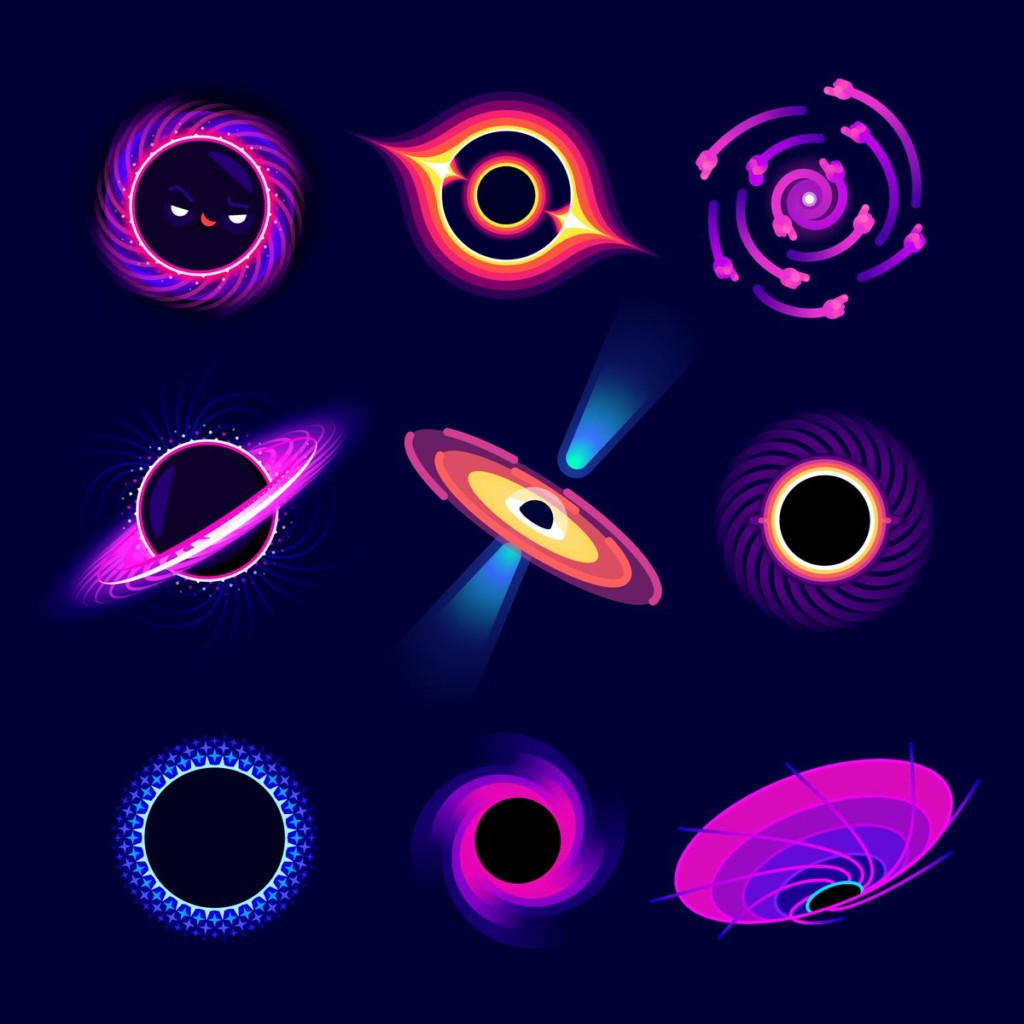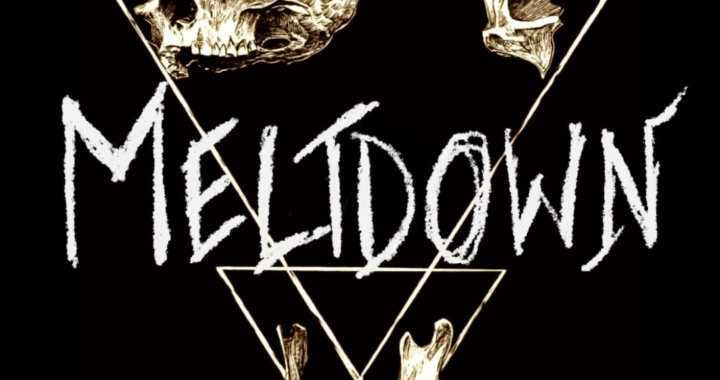Breaking Down The Toughest Photoshoot

This article was the winning submission for a writing contest conducted by the Astronomy Club in 2019. Submission by KV Aditya
Capturing a glimpse of the strangest members of our universe
ENTER: THE SUPERMODEL
Black holes have been the poster boys for the realm of astrophysics and cosmology for quite a while now. Be it the mind-numbing gravity that impounds light itself, or the time-dilation that implicates convoluted yet impassioned stories, these rising “stars” have been an all-time favourite for not just scientists, but us sci-fi lovers too.
But even in all their grandeur, black holes have spent most of their lifetime existing only in theory. Ever since their prediction in 1916 by Einstein, they’ve been under heavy scrutiny and debate, and although some phenomena such as gravitational lensing and unprecedented gravitational interactions in seemingly empty space have supported the claim, none of them qualify as
“PR worthy” material.
Amidst all this, an “image” of a black hole seems to be a pretty convincing piece of evidence. So what are we waiting for ? Let’s set out for a stargazing session : All we need is an Earth sized telescope……
….Yep, even something as dreamy as Physics can sometimes suck. Diffraction puts a restriction on our conventional ways of observing distant objects:
Minimum Observable Size = k * Wavelength/Telescope Size
Effectively, this puts the problem at hand, at par with observing an orange placed on the surface of the moon with the naked eye from Earth.
Just for comparison, this is one of the highest resolution images of the Moon that we we have ever captured from Earth using the most powerful telescopes ever built. It contains roughly 13 thousand pixels and yet each pixel in this image can accommodate more than 1.5 million oranges!
WARMING UP THE EARTH SIZED DSLR
Crunching the numbers, one puts the approximate size of the telescope close to the size of Mother Earth herself. To this, the team of 200 scientists at Massachusetts responded by doing the most practical thing, they built a telescope the size of the Earth! Hear me out…
Imagine the telescope as an Earth sized mirror aimed at the black hole. Now go ahead and shatter that mirror into a thousand different pieces. Place all the pieces back in their positions.
Now, out of practicality (and budget XD), remove most of these pieces, barring a few, distant from each other. Resultantly, these give only a fraction of the image at a time:
But as the Earth rotates (and obviously over thousands of such iterations), these handful of tiny mirrors give a much more emergent perspective of the object:
Similarly, the “Event Horizon Telescope” comprises of several atomically-synchronized radio telescope stations spread across the globe owned by a total of 13 stakeholding institutes, which in turn consist of dozens of telescopes each. Through the technique of “very-long-baseline-interferometry” or VLBI (ie. A highly geeked-up version of the concept explained above) applied in a range of 230-450 GHz, the team at EHT was successful in constructing a telescope with an effective aperture with a size that of the Earth.
Note that the above mentioned frequency range was chosen strategically to penetrate through the outer layers of the accretion disk of a black hole and capture the matter close to the event horizon.
PHOTOSHOPPING THE DATA
The telescope was aimed at the heart of the M87 galaxy, specifically, its nucleus: M87* a supermassive black hole weighing 7 billion solar masses. In comparison, if the Earth were an orange, then M87* would weigh 4 times the mass of Mt. Everest! After continuous data collection from 2006 to 2017, dozens of petabytes of data was gathered at the EHT Lab in Massachusetts on physical drives from all over the world.
But now the actual “gargantuan” task begins (pun intended):
Although we have a lot of data, remember that this makes for a puny fraction of the actual image. So, there exists an infinite number of images that perfectly agree with the data collected.
So the task at hand is to devise an algorithm (Prof. Kannan triggered) that can zero-in on an image that is the most “reasonable” and at the same time, concurs with our data.
This is akin to how a sketch-artist pieces together the image of the suspect with only a handful of features and his knowledge of face structure.
We do this by ranking the possible images in order of their likelihood of resemblance with an actual image of a black hole. But this is to be done with caution, because if we impose our current theories and understanding of black holes upon deciding the order too much, we might end up seeing only what we want to see.
ENVISAGING THE SNAP
The lack of an image of a black hole has not stopped people from trying to conceptualize what the devouring monster may look like. The most agreed upon model is as follows:
Initially one would come up with nothing more than a black sphere. (radius r: called the schwarzschild radius)
Now, as it comes naturally for a glutton, a black hole is bound to be surrounded by its food: all the matter around it. It’s present in the form of a hot rotating “accretion” disk, or rather a torus, due to an innermost stable circular orbit of around 3r, under which, any matter would eventually collapse into the black hole.
Light, on the other hand, can circle much closer to the event horizon, at around 1.5r, forming what is called a Photon Sphere
But how large would the famous circular “shadow” of the black hole be in the image ? Turns out, the shadow extends upto about 2.6r in size, owing to the fact that any light closer than that to the black hole, would eventually circle about and be engulfed by the sphere.
Going back to the accretion disk: Light from the hind side of the disk, hidden behind the shadow, curves around it (due to the heavy gravitational lensing) and would appear perpendicular from the front side of the disk. The same goes for the bottom counterpart. This creates a bright standing ring around the shadow, giving it the iconic “Interstellar” touch!
Also, the ring is rotating at astronomically high speeds. Therefore, the side wherein matter is approaching the observer glows brighter than its counterpart due to good ol’ doppler beaming, and the other side glows dimmer.
SAY CHEESE!
This is the first image of M87* published by EHT on April 10th, 2019. Before I get all teared up, let’s go over the accuracy of our predictions:
- One thing that one observes right off the bat is that the image is very fuzzy. But keep in mind that this astronomical feat is equivalent to “counting individual dimples on a golf ball in Los Angeles from New York”.
- The earnestly awaited “shadow” of the black is clearly distinguishable in the centre.
- The standing bright ring indicates that light from the accretion disk behind the shadow is indeed warping around it to make it to the front side.
- Note the variation in brightness of the ring. The approaching side of the spinning accretion disc (below) is glowing brighter and the receding side (above) appears significantly dimmer.
- Noting the above point and considering the 17 degree inclination of the black hole’s normal relative to us, scientists have deemed the black hole to be rotating in a clockwise manner.
CONCLUSION
The team is going to continue to refine upon the image, as further details will help us ascertain the fate of our current theories and possibly kindle the fires of new ones.
Such an iconic image is not only a milestone in our endless endeavour of delving into the cosmos and imbibing from it, but is also a living proof of what marvels we can unravel when people from different disciplines , schools of thought and even nationalities collaborate.
I sincerely hope we continue on this path of exploration and learning in every domain pertaining to this or any other universe, because, in the words of Carl Sagan –
“We’re made of star stuff. We are a way for the cosmos to know itself.”
REFERENCES
- https://eventhorizontelescope.org/ Apart from a galore of information about the science behind the triumph, the site also contains details regarding how one can contribute to the project. Astrophysics, astronomy, cosmology & computer science are just a handful of fields from which both experts and amateurs are invited !
- For more information on:
- Doppler Beaming: https://en.wikipedia.org/wiki/Relativistic_beaming
- Gravitational Lensing: https://en.wikipedia.org/wiki/Gravitational_lens
- Quasars: https://en.wikipedia.org/wiki/Quasar
- Understanding such mind-numbing concepts can be difficult to discern, but these YouTube channels have simplified the process substantially:
- Kurzgesagt: https://www.youtube.com/user/Kurzgesagt
- Veritasium: https://www.youtube.com/user/1veritasium
- PBS Space Time: https://www.youtube.com/channel/UC7_gcs09iThXybpVgjHZ_7g
- Vsauce: https://www.youtube.com/user/Vsauce

 DaveAI
DaveAI  IIIT’s Smart Campus Vision
IIIT’s Smart Campus Vision  Seeing That Which Cannot Be Seen
Seeing That Which Cannot Be Seen  Helping Hyderabad ‘Commut’!
Helping Hyderabad ‘Commut’!  Not All Drinks Are Created Equal
Not All Drinks Are Created Equal  Depression Denied
Depression Denied  Have you tried turning the mess off and on again?
Have you tried turning the mess off and on again?  Log Kya Kahenge?
Log Kya Kahenge?  Can you hear the music?
Can you hear the music?